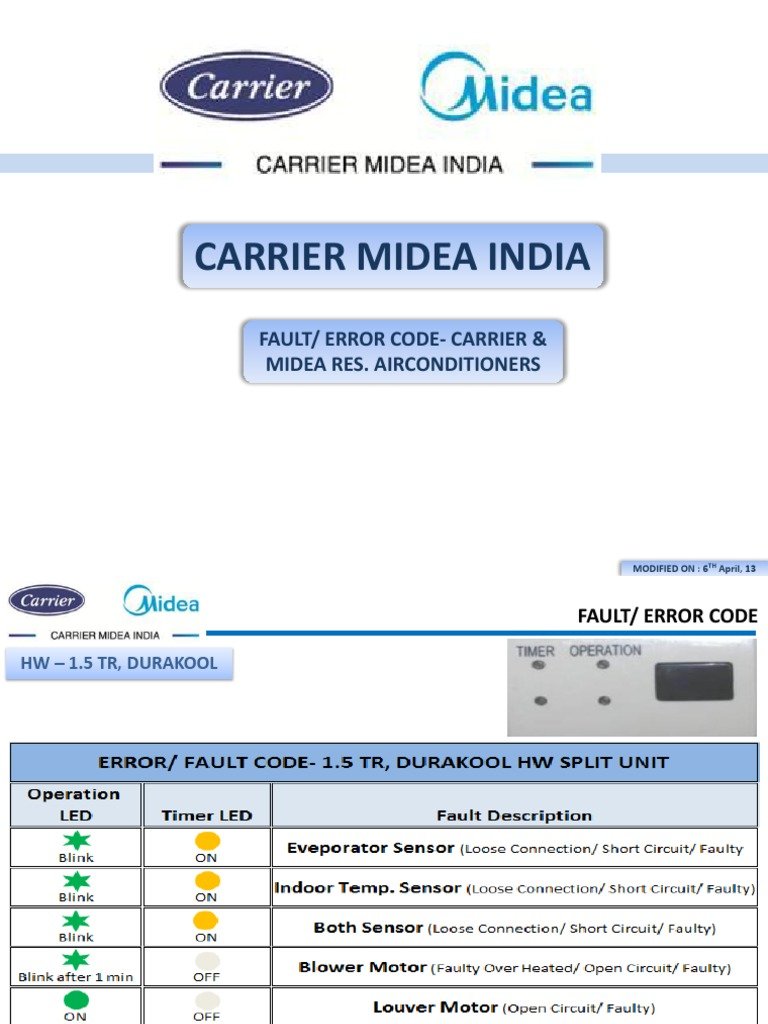
Imagine your air conditioner as a well-orchestrated symphony. All the parts—like the conductor and the musicians—must work in harmony to create a beautiful experience. The “E3” error code is like a rogue musician hitting the wrong note, disrupting the entire performance. This error usually has to do with issues related to air temperature sensors, and it can stop your cool haven from functioning at its best. But what exactly causes this error, and how can you troubleshoot it? That’s what we’re going to explore in this article.
Understanding Error Code E3: What’s Going On?
So, what does the “E3” error code mean? Picture your air conditioner as a diligent sentry tasked with monitoring room temperature to keep your space comfy. This little sentry, otherwise known as the temperature sensor, constantly checks the room’s conditions. When something goes awry with this sensor, your air conditioner throws up an “E3” error code to alert you.
The temperature sensor is like your air conditioner’s very own thermometer, keeping tabs on the air coming in and out. When it malfunctions or gets inaccurate readings due to dust buildup or wire issues, it raises a red flag. Think of it like your friend with a faulty GPS directing you the wrong way. If this happens, the whole system can get confused, leading to poor cooling or even no cooling at all.
Once this error pops up, your air conditioner might not know if it should cool down the room or if everything’s just peachy. This uncertainty can cause the unit to shut down intermittently or fail to start at all. But don’t let that scare you off—tackling this issue is often simpler than it seems.
Root Causes Behind the E3 Error
Why does the “E3” error code come up in the first place? One common reason is a faulty temperature sensor. Over time, like your favorite old gadget, wear and tear can take a toll, causing the sensor to lose its edge. This could lead to it misjudging the room’s temperature, which then triggers the error code.
Another reason might be loose or broken wires connected to the sensor. Wires are like the veins of your air conditioner, carrying crucial information back and forth. If these wires are damaged, the sensor might not communicate effectively with the main unit, resulting in errors. A bit like a telephone line that’s been snapped, your air conditioner just can’t get the message across.
Dust and dirt buildup can also be culprits. You know how wearing glasses smudged with fingerprints can blur your vision? Similarly, dust on the sensors can inhibit their ability to function properly. Regular cleaning might just be the simple fix you need to keep those sensors working perfectly.
Addressing the E3 Code: Simple Solutions
Now that we understand what might be causing the “E3” error, let’s talk solutions. First things first, try inspecting and cleaning the sensor. With the unit turned off, gently clean it using a soft brush or cloth to remove any dust or grime. This is often enough to reset the system and clear the error code, much like giving your car windshield a good wipe.
If you suspect wiring is the issue, it’s a good idea to call in a professional to check the connections. Tinkering with wires can be tricky and even a bit dangerous, like trying to untangle a mess of holiday lights without getting a shock. Having an expert ensures everything is connected and secure, and that power flows smoothly where it should.
In cases where you have a faulty sensor, replacement might be necessary. This isn’t something you should wing on your own. A technician can quickly pop in a new sensor, akin to replacing a dodgy battery in your remote, getting your air conditioner back up to speed in no time.
Prevention and Maintenance: Keeping Things Cool
Prevention is always better than cure, right? Regular maintenance can go a long way in preventing the “E3” and other error codes. Just like you might give your car a tune-up before a long road trip, giving your air conditioner a routine check can ensure it runs smoothly and efficiently.
Consider setting up a maintenance schedule. Every few months, check the filters and clean any accumulated dust on the sensors. This is similar to brushing your teeth every day to avoid cavities. Keeping those sensors clear ensures they won’t misread the room’s temperature, sparing you from unexpected interruptions.
Additionally, educate yourself on how your unit works. Get to know its quirks and listen to how it operates. This way, if something feels off or you hear unusual noises, you’ll be well-equipped to address it proactively. Knowledge is power, especially when it helps keep your cool!
In summary, the “E3” error code in Midea air conditioners is largely caused by issues with the temperature sensor or its connections. By cleaning, regularly maintaining your unit, and seeking professional help when needed, you can ensure your air conditioner continues to provide the comfort you rely on. Stay cool, and breathe easy knowing you’ve got the tools to handle any hiccups that come your way.